Blog
What We Did in Nicaragua: Spring 2018
February 23, 2018
As part of our semester programs, students spend a week in Nicaragua. This year, I had the chance to go with them and visit this country for the first time.
It took us 11 hours to get to the capital, Managua. As we arrived on Saturday, a city with no traffic and huge colorful trees received us. Those trees are a sign of the political situation of the country which we learned about from the moment we crossed the border. We saw a lot of huge posters on the street with a picture of Nicaragua’s president, Daniel Ortega, and his wife -and also vice president- Rosario Murillo.
In Managua, we visited La Plaza de la Revolución, a place full of historical meaning. In 1979, the Sandinista revolution triumphed over Somoza’s government and started a new chapter in the country’s history. Students not only learned about Augusto César Sandino and how he fought for a better Nicaragua, but also how Daniel Ortega, who has been Nicaragua’s president since 2007, used the Sandinista Movement to stay in power.
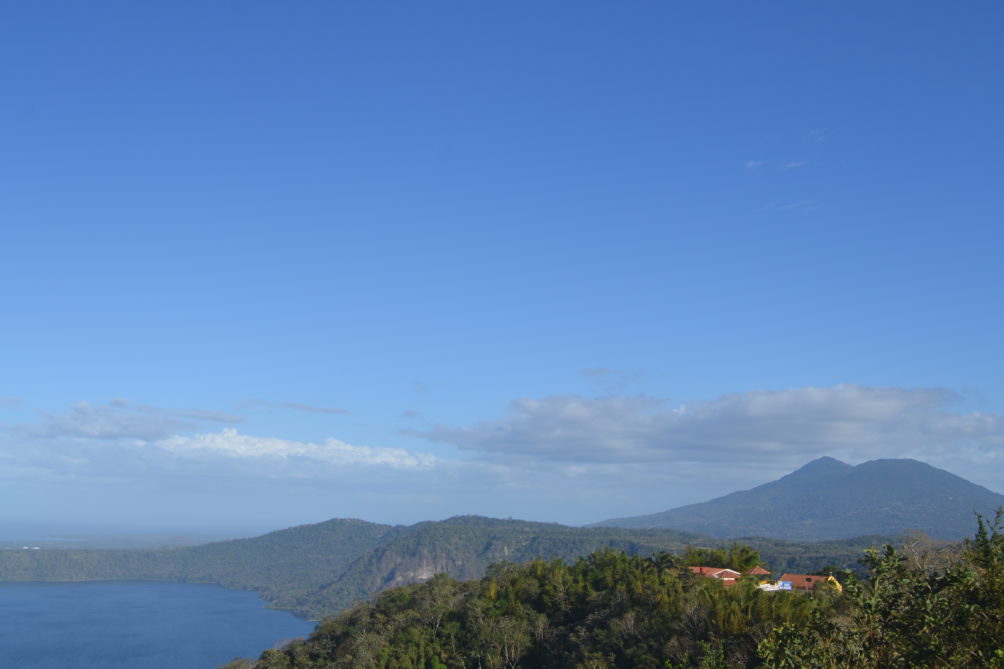
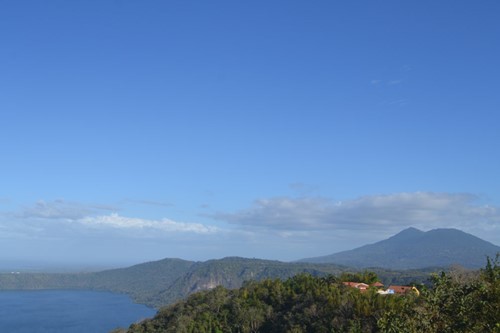
Before moving to our next stop, we had the chance to learn about employment conditions in Nicaragua, especially for those who work in free zones. We heard from three young ladies who were part of the textile industry. They explained what their jobs are, their shifts, payments, and how the work conditions have changed in growing free zones in the country.
Later, we moved to Matagalpa, a city close to the north and where it never stopped raining. Matagalpa is known as a coffee area, so we had the chance to see the other side of employment: a coffee farm that is part of a cooperative, follows fair trade standards, and also practices sustainable development. For example, they have a tour where visitors can see the how coffee is produced and learn about local flora and fauna. It took us about 2 hours to finish the tour but we saw amazing local plants and animals.
Due to the political situation in the country since the revolution, social organizations have a very important role in Nicaragua. An example of this the Nicaraguan Communal Movement, an organization that helps Nicaraguans, especially children and women, benefit each other through solidarity. They do this through workshops, programs, and the development of strategies together with communities depending on their needs.
In Matagalpa, we learned more about Nicaraguan employment, particularly its social side, when migrant women shared their experiences working in Costa Rica as maids. Just like the women working in the textile industry, they mentioned their working conditions and how hard it was for them to leave their country in order to get more money for their family.
Later, we moved to León, also a city close to the north. León is full of beautiful colonial churches, markets, and old buildings with beautiful doors. We were able to clear up any questions about the Nicaraguan Revolution when we visited the Revolution Museum where Francisco Rois, an ex-guerrilla member shared his story with us from a very Sandinista point of view, of course.
We visited Cerro Negro, a unique black volcano with no vegetation around it. This was maybe the most challenging part of our visit. Hiking was hard, and the wind was so strong we had to crouch down several times to avoid falling. Most of us thought we could not make it, but at the end we all made it to the top. The view was totally worth it, and descending was the funniest part of our trip.
Also in León we visited El Suspiro, a cooperative that produces organic honey. The project is part of La Base, an organization that supports local entrepreneurs by giving them access to loans in an easier way than going to a bank for example. In a country like Nicaragua, where informal work is very common, the access to this type of loan is very important because it gives people the tools they need in order to start their own business.
We went back to our hotel and had a group discussion where students shared their most important learnings, like the country’s current economic and political conditions, and how they compared and contrasted its reality with neighboring Costa Rica.
Finally, we had a free afternoon. Some decided to go for a walk and visit local markets. Others went to take pictures (that was my case), and some others decided to stay in our hotel and relax in the pool. Nicaragua, the country full of lakes and volcanoes, welcomed us with open arms and made us feel like home the week we were there.
Than you so much, Nicaragua!
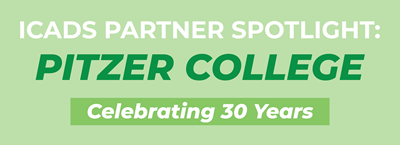
ICADS Partner Spotlight: Celebrating 30 years with Pitzer College
ICADS and Pitzer College celebrate and reflect on 30 years of working together in Study Abroad!
#COSTA RICA #ICADS ACADEMIC #NEWS #STUDY ABROAD
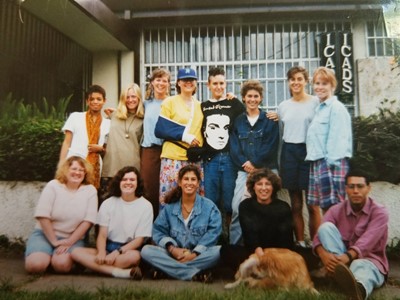
Alumni Newsletter
A few weeks ago, ICADS received an email from an alumnus from 1993, which was only a few years into the existence of the program. Hearing a little about this once student's experience and how ICADS changed the trajectory of their life rang familiar to us here, and we hope to celebrate that legacy and the mission that enables it.
#CULTURE #INTERNSHIP #STUDY ABROAD
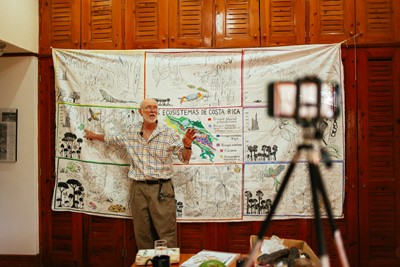
A Year in Review: Change and Adaptation in 2020
As we approach one year since the COVID-19 pandemic began, we reflect on a year of change and adaptation, and we look forward to a new chapter in 2021!
#COSTA RICA #STUDY ABROAD #ICADS ACADEMIC #NEWS